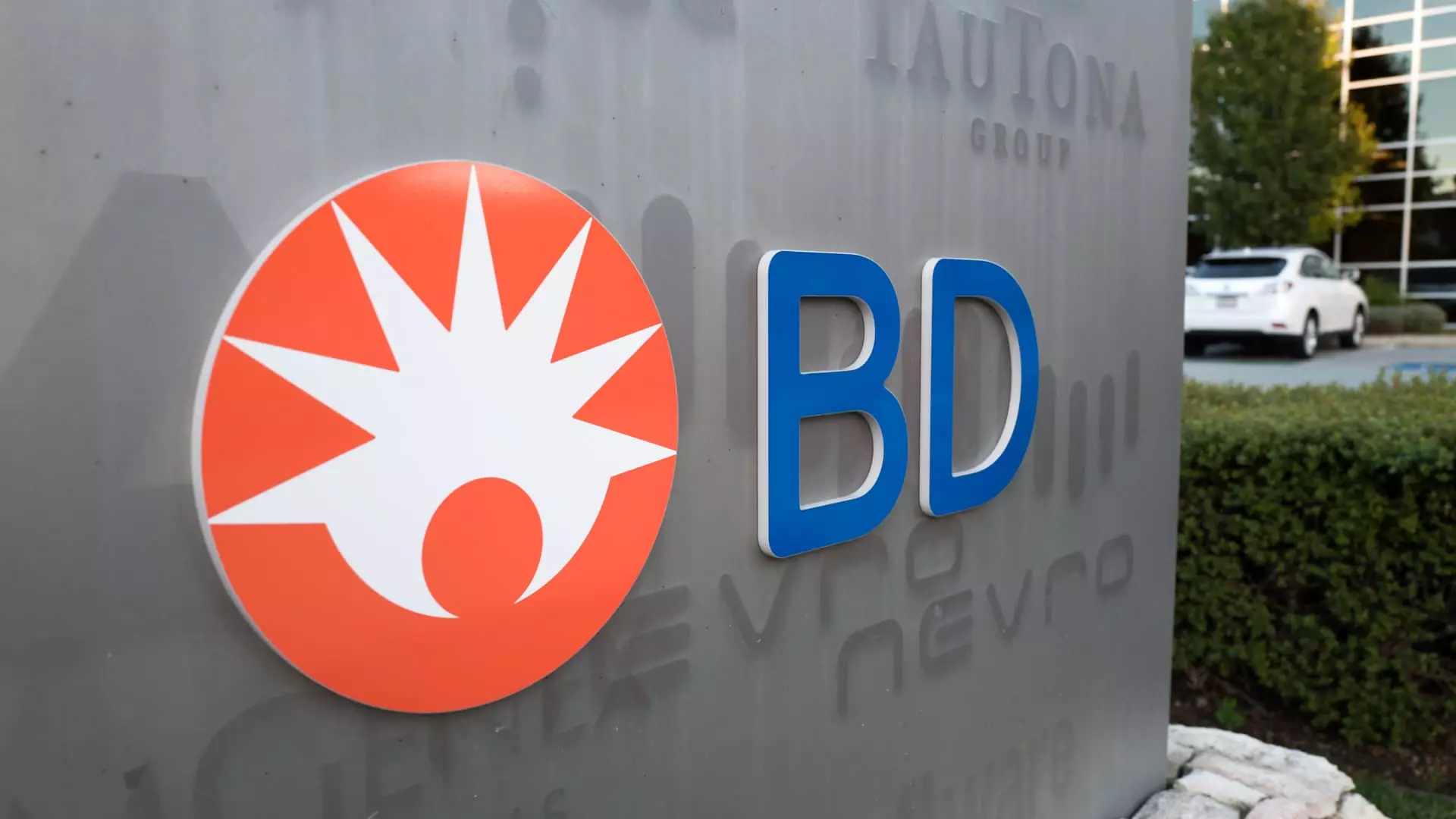Becton Dickinson (BDX), a stalwart in the medical technology industry, has recently drawn the attention of activist investor Starboard Value. With a plethora of products ranging from medical supplies to diagnostic solutions, BDX serves a wide array of public and private healthcare entities globally. However, the company’s forward trajectory now hinges on its operational efficiency and strategic structural changes that could redefine its market valuation and operational effectiveness.
BDX is recognized for its comprehensive range of medical devices and systems that cater to health care providers, researchers, and laboratories worldwide. The company boasts a substantial market capitalization of approximately $66.65 billion, trading at about $229.85 per share as of recent evaluations. This strong financial footing has allowed the company to expand significantly over the years, but it has also made it susceptible to scrutiny regarding its operational strategies and market positioning.
The company essentially operates in two primary segments: MedTech, which includes medication delivery systems and interventional products, and Life Sciences, focusing on diagnostics and laboratory equipment. Each of these segments presents distinct characteristics and growth dynamics, which has created a rift in how investors perceive the overall value of BDX.
Starboard Value, known for its hands-on approach in enhancing company operations and market performance, has recently taken a keen interest in BDX. With an impressive track record of achieving significant returns for shareholders, Starboard has pushed for the separation of BDX’s Life Sciences division from its MedTech operations. The rationale behind this strategy is simple: the two businesses, while both under the BDX umbrella, are at different stages of growth and are subject to disparate market valuations.
Recent data uncover that MedTech is demonstrating a mid-single-digit growth rate, significantly outperforming the Life Sciences segment, which is witnessing slower, low-single-digit growth. Moreover, the valuation multiples assigned to these segments starkly contrast, with MedTech’s trading at about 13 to 14 times EBITDA compared to Life Sciences’ upward of 20 times. This discrepancy raises questions about BDX’s integrated structure and whether it maximizes the potential and shareholder value inherent in its diverse offerings.
The case for spinning off the Life Sciences segment is bolstered by the potential for enhanced focus in management and operational practices. Starboard’s push for separation is not merely an arbitrary request but is substantiated by an analysis indicating that such a move could lead to significant valuation appreciation for both segments. The MedTech division could realistically achieve a valuation that propels the overall company beyond $110 billion if both segments are independently managed.
Moreover, the autonomy granted to each segment management team would facilitate a more tailored approach to their specific challenges and opportunities. With a dual focus on growth and efficiency, both divisions could not only enhance their individual market positioning but also potentially engage with a wider pool of investors drawn to the specialized nature of their businesses.
In the current landscape, BDX is grappling with several challenges and opportunities as it contemplates this strategic shift. Although its Life Sciences unit boasts a semblance of structural stability indicative of lower exposure to cyclical fluctuations, its slower growth may impede overall company performance if left bundled with the fast-evolving MedTech segment.
Reports suggest that the Life Sciences division could fetch evaluations around $30 billion when separated—a figure that still aligns under conservative EBITDA multiples, reflecting inherent synergies that BDX may wish to retain. However, the clear message from Starboard and other market observers is that the potential gains from separation far outweigh the complications of division, offering a more focused strategy going forward.
Starboard is renowned for its rigorous and results-driven strategies in the activist investment arena. Unlike many activist campaigns that rely heavily on instigating change through forceful board changes or confrontational tactics, Starboard appears to be navigating a more receptive corporate landscape with BDX. The company’s preexisting considerations for division signal that Starboard’s engagement is aligned with the company’s evolving strategic focus.
As BDX navigates this potential split, it is crucial for the leadership to remain attuned to shareholder interests while embracing the necessary changes to facilitate growth and value creation. With the right operational strategies in place, BDX has the potential to transform its market narrative significantly.
The potential separation of Becton Dickinson into more focused entities could be a watershed moment, presenting unique growth opportunities and enhanced investor appeal. The road ahead may be complex, but the strategic insights offered by activist investors signal a promising evolution for this vital healthcare company.

